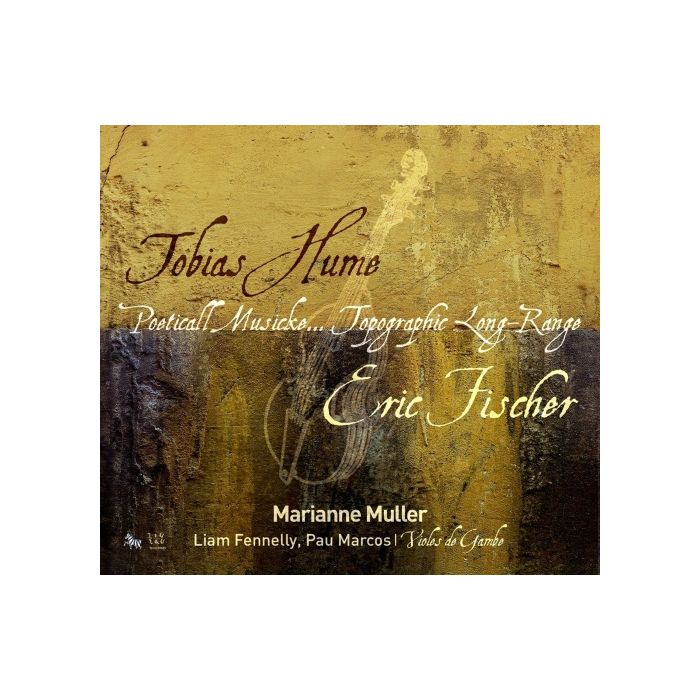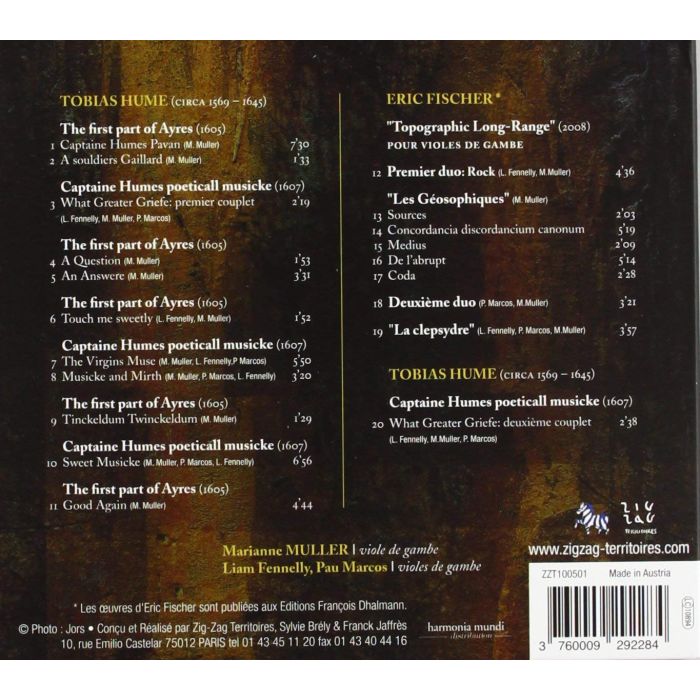
(Produkt nie został jeszcze oceniony)
kompozytor
różni kompozytorzy
tytuł
Hume & Fischer: Poeticall Musicke... Topographic Long-Range
pełny spis kompozytorów
Fischer, Eric, Hume, Tobias
wykonawcy
Fennelly, Liam, Marcos, Pau, Muller, Marianne
nr katalogowy
ZZT 100501
opis
Marianne Muller - fierce player of viola da gamba, recently applauded for her outstanding interpretation of Folies d’Espagne of Marin Marais on Zig-Zag Territoires - brings us solo and consort pieces of Tobias Hume - captain and eccentric English composer of XVIIe century. Committed to her instrument, Marianne Muller commissions to contemporary composers new pieces for viola di gamba... Eric Fischer created a piece dedicated to Tobias Hume. • Little is known of Hume’s life. Some have suggested that he was born in 1569 because he was admitted to the London Charterhouse in 1629, a pre-requisite to which was being at least 60 years old, though there is no certainty over this. He had made his living as a professional soldier, probably as a mercenary. He was an officer with the Swedish and Russian armies. • His published music includes pieces for viols (including many solo works for the lyra viol) and songs. They were gathered in two collections, The First Part of Ayres (or Musicall Humors, 1605) and Captain Humes Poeticall Musicke (1607). He was a particular champion of the viol over the then-dominant lute, something which caused John Dowland to publish a rebuttal of Hume's ideas. • Hume was also known as a prankster, as some of his somewhat unusual compositions illustrate. His most notorious piece was "An Invention for Two to Play upone one Viole". Two bows are required and the smaller of the two players is obliged to sit in the lap of the larger player. This work was notated in tablature and is indeed technically possible to play. His instructions to "drum this with the backe of your bow" in another piece, "Harke, harke," constitute the earliest known use of col legno in Western music. • Eric FISCHER has composed more than 200 works, which range from pieces for solo instrument to symphonic form by way of every type of instrumental forces and the most diverse experiences, including chamber music, electronics, vocal works, incidental music for the theatre, improvised music, and pieces for period instruments. His openness to encounters of all kinds has led to other highly unusual artistic exchanges.
nośnik
CD x 1
wydawca
Zig Zag Territoires
data wydania
28.06.2010
EAN / kod kreskowy
3760009292284
79,00 zł
Produkt dostępny.
Wysyłka w ciągu 3 dni roboczych
Darmowa wysyłka dla zamówień powyżej 300 zł!
Darmowy kurier dla zamówień powyżej 500 zł!
sprawdź koszty wysyłki